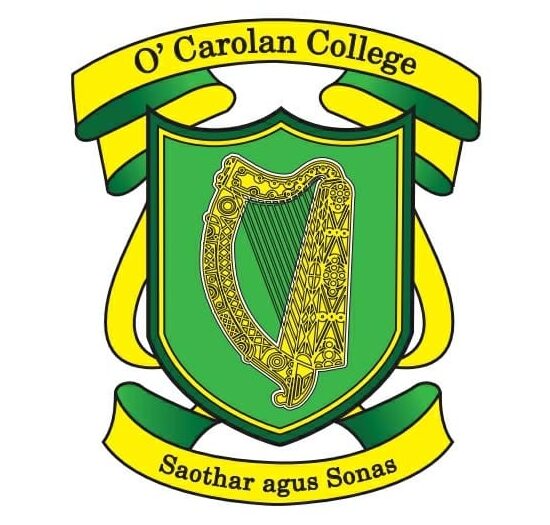Spanish
Department members
Regina Mulligan and Hannah Rooney
Department Coordinator – Hannah Rooney
Department Mission Statement
The aim of the Spanish department is to equip pupils with the five language skills – listening, reading, spoken production, spoken interaction and writing. Students will become competent in the target language, develop the ability to reflect on their own learning and will be enabled to explore the interdependence between language and culture.
Provision of Spanish in the school
All incoming pupils now choose to take French or Spanish and continue with their chosen language to Leaving Certificate level. Pupils in the Junior Cycle have four periods of Spanish per week, while Transition Year have three and Leaving Certificate Applied have two class periods. Fifth and Sixth Year students will study Spanish for five periods each week. All Junior Cycle classes are mixed-ability groups while Leaving Certificate students are divided into higher and ordinary level, based on their Junior Cycle results.
Planning, preparation and resources
There are weekly departmental meetings held in which textbooks, resources, in-career development, examinations and schemes of work are discussed. Various textbooks such as aural, oral and grammar books are used to cater for the five key skills and all students are shown the proper use of on-line dictionaries.
Spanish teachers are members of the Spanish Teacher’s Association of Ireland and regularly attend in-service courses and conferences. We regularly receive training for the new Junior Cycle in Modern Foreign Languages and attend many online training courses to help with oral proficiency and preparation of CBA’s.
Teaching and Learning
Pupils from first to sixth year are prepared to become competent, creative and independent language learners, with a view to completing the Junior Cycle and Leaving Certificate exams. In the Junior Cycle, language skills are developed across three inter-related strands: communicative competence; language awareness; and socio-cultural knowledge and intercultural awareness. The Leaving Certificate course builds on these learning outcomes and aims to further develop learner autonomy. A range of varied teaching methods and active learning strategies are employed to cater for all abilities in a typical Spanish class. These include individual and group activities, project work, role plays, creating displays, realia (authentic Spanish literature and magazines), listening activities, puzzles and games, map reading and the use of ICT such as the internet, PowerPoint, DVDs, podcasts and on-line language games.
First Year
Throughout the three years or the Junior Cycle, students’ learning is based on the specific learning outcomes from the three strands: communicative competence; language awareness; and socio-cultural knowledge and intercultural awareness. In first year, students become familiar with the basic geography and culture of Spain. Pupils learn to introduce themselves in Spanish and will cover the following topics – numbers, months, days, food, school subjects, animals, house, town and hobbies. Students keep a portfolio of various pieces of work and are encouraged to reflect on their learning as the year progresses. Teachers assess students’ learning in a number of ways, including oral presentations, project work, group assignments, aural exercises and written tests.
Second Year
In second year, students will reinforce topics covered in first year and become more competent in reading, writing and speaking the language. They will learn to write short messages, postcards and simple letters as well as developing the ability to read and interpret texts in Spanish. They will gain extra knowledge about Spain and its culture and are able to discuss differences between Irish and Spanish ways of life.
During this year, they also sit their first Classroom Based Assessment, which happens in January. This is an oral task (spoken production) and it takes place during class time. Various methods of assessment are employed throughout the year to ensure that all students’ competencies are promoted and celebrated. As well as their CBA, students sit end of term written tests.
